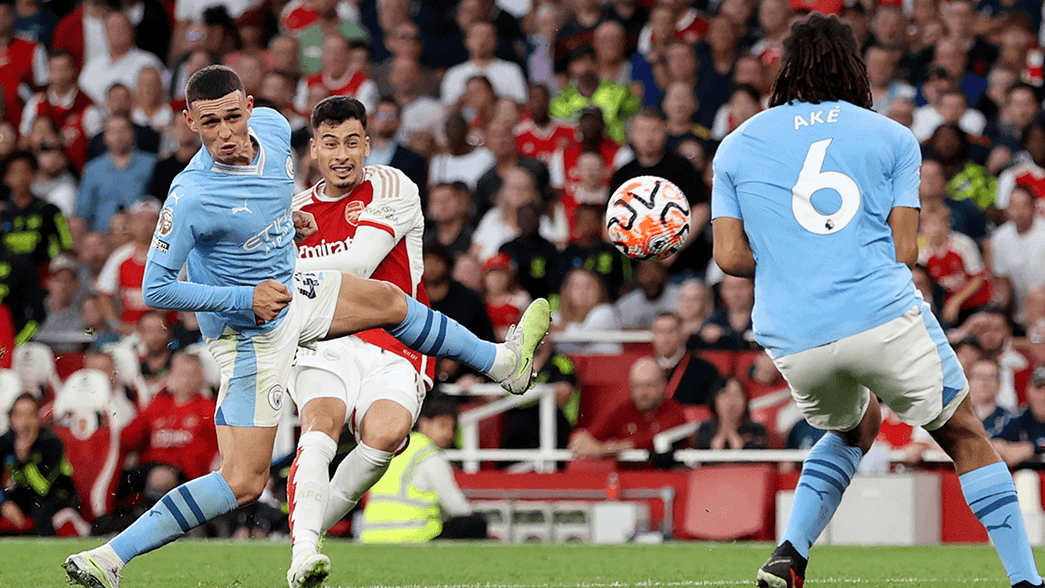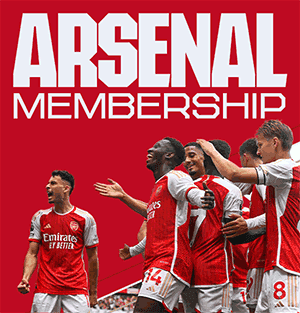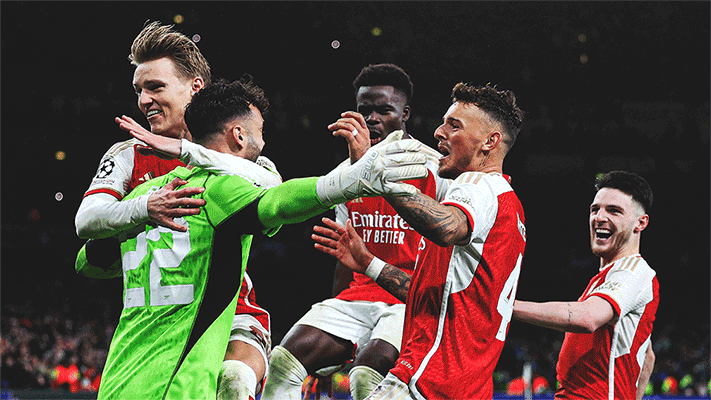Our 1-0 success over Manchester City on Sunday ensured everyone with a Gunners affiliation headed into the international break happy, as we finally managed to record a league win over the Sky Blues for the first time in 15 matches.
But how did we manage to do it? Adrian Clarke has been pouring through the numbers and rewatching the action to undercover what the five keys to the victory were:
Double pivot perfection
Mikel Arteta showed Manchester City respect by altering the configuration of his central midfield, bringing Jorginho into his starting XI as a double pivot alongside Declan Rice. It was a tactical decision which paid off handsomely.
Together at the base of the engine room they screened service into Erling Haaland magnificently, limiting the Norwegian to just 23 touches. Tellingly, just four of those involvements were in the final 25 yards of the pitch.
As you can see on this combined defensive chalkboard, the duo protected the central spine superbly with a number of important tackles, interceptions and ball recoveries. Rice’s early clearance off the line from a goal-bound Gvardiol effort was also a crucial intervention.

On the ball both players exuded composure and class too. Between them they gave the ball away just once inside our own half of the pitch, despite being put under pressure by the City press.
Always sensible in their decision-making, Rice and Jorginho were exceptionally disciplined. While City’s narrow formation and restrained tactics certainly helped the pair congest space, the positions they took up in front of our central defenders were consistently excellent.
Without the solid shape they kept, Pep Guardiola’s side would have created more than the four shots they mustered.
As indicated in this frame below, our tight double pivot nullified City’s threat down that all-important central portion of the pitch.

Jesus’ key role
Using three central midfielders and wide forwards who both wanted to tuck inside, City were very narrow in their set-up. Until the late introduction of Jeremy Doku they relied on full-backs Kyle Walker and Gvardiol to provide their width, which undoubtedly helped to prevent us from being stretched.
Playing on the right, Gabriel Jesus delivered a selfless but incredibly important display. Off the ball he worked incessantly hard to regain possession, throwing himself into 25 duels, including four tackles. And when we did turn the ball over. Jesus stayed wide as a matter of course to give his teammates an ‘out-ball’ whenever we launched our own attacks.
A clear sign of how we targeted spaces that City left free out wide can be seen on this attacking thirds map, below.

We headed right so often and as a by-product of this tactic, and his own determination to show for the ball, Jesus enjoyed more touches than any other Arsenal player (78) on the day. The bulk of those involvements were in wide areas inside the final third, and Jesus’ energy (he made a joint team-high 17 sprints) helped us gain ground on numerous occasions.
Centre-back masterclass
The cautious nature of this tactical encounter - which saw both teams minimise their risk-taking - made life easier for centre-backs Gabriel and William Saliba, but they still deserve huge praise for their performances.
Communicating with each other clearly, we did not witness any moments of alarm when the duo were called into action. Saliba was eye-catchingly dominant in his physical tussles with Haaland, and on two occasions City tried to pick out the Norwegian with passes played in beyond the last man, in crucial 1v1 duels our French colossus came out on top.
Unlike many players in his position, Saliba has the pace and body strength to compete with a striker of Haaland’s class. In this clip below, on a rare moment where we were caught out of shape, he outmuscled the City front man to block off his run as the champions tried to pick him out on the break. It was one of the game’s defining moments.

While taming Guardiola’s side was a collective effort, the confidence Gabriel and Saliba exuded on and off the ball was a contributory factor in this victory. They were calm and fully focused from beginning to end.
This was the first time a team managed by Guardiola had failed to have more than four attempts on goal since 2010, going back to when he was in charge of Barcelona - a record low for Manchester City since the Spaniard became their head coach.
|
City's opponent |
Date |
Total shots (inc. blocks) |
|
Arsenal |
08/10/2023 |
4 |
|
Manchester United |
14/01/2023 |
5 |
|
Manchester United |
26/10/2016 |
5 |
|
Liverpool |
07/10/2018 |
6 |
|
Monaco |
15/03/2017 |
6 |
Hard work pays off
With both teams attempting to lure the other onto them when they passed out from the back, we witnessed plenty of lulls in the action. Putting 11 men behind the ball on numerous occasions too, the pace of this high-stakes clash dropped to walking pace at times.
Even so, plenty of distance was covered by both sides, with Arsenal outworking their opponents by running an additional 2.1km. We also made 19 extra high-intensity sprints, and as they are so often, it was Rice (11.6km) and Martin Odegaard (11.9km) who led the way in terms of ground covered.
|
|
Distance (km) |
Sprints |
|
Arsenal |
112.1 |
129 |
|
Manchester City |
110 |
110 |
Super subs win it
Half-time replacement Gabriel Martinelli injected more pace and width into our play in the second period, and against that narrow City shape he also occupied Walker, who became more reticent to attack.
Our winning goal involved all four Arsenal substitutes, and it was a triumph for their collective sharpness and game awareness. Spotting that City’s low block was a touch higher than it had been throughout, Thomas Partey eyed up a rare long pass in behind. Simultaneously, Takehiro Tomiyasu, infield from left-back, had spotted that same hole and decided to make a forceful forward run.

From that aerial pass, Tomiyasu was brilliantly supported by Kai Havertz, who held the ball up well before setting it back to Martinelli, who scored with a deflected strike.
All four players had made a positive difference prior to this goal, but their involvement in it was confirmation the manager had made the right changes, at just the right time.
Have a go at your own analysis by digging deeper into the numbers or building your own chalkboard with our revamped Stats Centre
Copyright 2024 The Arsenal Football Club Limited. Permission to use quotations from this article is granted subject to appropriate credit being given to www.arsenal.com as the source.










